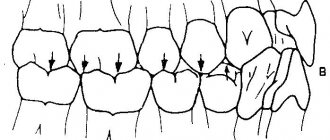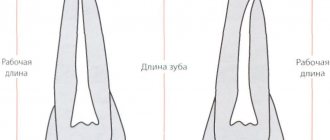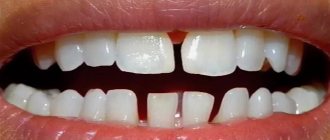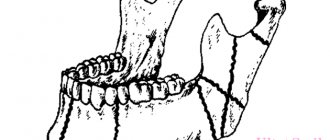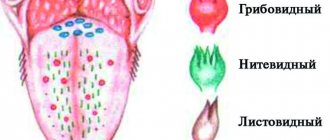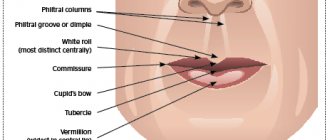Good afternoon, dear medical lovers. This is another post about anatomy - as you know, I consider anatomy to be the most important medical science.
I made several educational articles about bones and muscles, talked about how to learn anatomy and how to pass it, but I completely forgot to introduce you to basic anatomical terms. This is exactly where you should start learning anatomy.
Content
- 1 Terms used 1.1 Position relative to the center of mass and the longitudinal axis of the body or body extension
- 1.2 Position relative to the main parts of the body
- 1.3 Basic planes and sections
- 1.4 Methods of drug administration
- 2.1 Applications in human anatomy
- 3.1 Limbs
- 4.1 Applications in human anatomy
- 5.1 Mnemonic rules
Axes of the human body
There are three axes of the human body, they intersect with each other at an angle of 90 degrees:
- The vertical axis is the longest, it is directly perpendicular to the support on which the person stands.
- The transverse axis is parallel to the support.
- The sagittal axis divides the body from front to back.
Conventionally, it is possible to draw any number of transverse and sagittal axes through the human body. There is only one vertical axis, so it is also known as the main one.
The axes correspond to the planes of the body - sagittal, frontal and horizontal.
Terms used[ | ]
Position relative to the center of mass and the longitudinal axis of the body or body outgrowth[ | ]
| Term | Description of the term | Antonym | Description of the antonym |
| Abaxial | Farther from the axis | Adaxial | Closer to the axis |
| Apical | Situated at the top | Basal | Located at the base |
| Distal | Farthest along the anatomical formations from the center of the body | Proximal | Closest along the anatomical formations from the center of the body |
| For example, anatomically, the hand is always distal to the elbow - even if the hand is attached to the lower back and the elbows are protruding, the hand does not become more proximal. | |||
| Lateral | Lateral, lying further from the median plane | Medial | Middle, located closer to the median plane |
| It is considered based on the normal anatomical location of the body and does not depend on changes in the position of a part of the body - for example, the medial / lateral sides of the forearm do not change with each other when turning the arm. The terms "medial" and "lateral" are not synonymous with the terms "internal" and "external", especially in hollow organs. | |||
| Right | Located on the right side of the subject's body | Left | Located on the left side of the subject's body |
| Regardless of the position of this part in relation to the examiner, the examiner. | |||
| Front | Located in front of the chest, abdomen, face | Rear | Located behind the back, back of the head |
| With a normal position of the body (similar to right/left and medial/lateral, does not depend on the position of the viewer or changes in the position of a part of the body). | |||
| Rear | Usually applied to the foot/hand - the “back” part is located on the opposite side of the sole/palm. | ||
Position relative to the main parts of the body[ | ]
- Aboral
(lat. aboralis) (antonym:
adoral
) - located on the pole of the body opposite the mouth. - Adoral
(lat. adoralis) (oral; antonym:
aboral
) - located near the mouth. - Abdominal
(lat. abdominalis) - related to the stomach. - Ventral
(lat. ventralis) (antonym:
dorsal
) - abdominal (anterior). - Dorsal
(lat. dorsalis) (antonym:
ventral
) - dorsal (posterior). - Caudal
(lat. caudalis) (antonym:
cranial
) - caudal, located closer to the tail or to the posterior end of the body. - Cranial
(lat. cranialis) (antonym:
caudal
) - head, located closer to the head or to the anterior end of the body. - Rostral
- nasal, lit. “located closer to the beak”; located closer to the head or to the anterior end of the body.
Basic planes and sections[ | ]
Anatomical planes. Green indicates the axial plane, blue indicates the frontal plane, red indicates the sagittal plane, and yellow indicates one of the parasagittal planes (parallel to the sagittal).
- Sagittal
- a section running in the plane of bilateral symmetry of the body. - Parasagittal
- an incision running parallel to the plane of bilateral symmetry of the body. - Frontal
(lat. frontalis) - an incision running along the anterior-posterior axis of the body perpendicular to the sagittal. - Axial
- a cut running in the transverse plane of the body
Methods of drug administration[ | ]
Main article: Route of administration
- orally
- through the mouth; - intradermal
,
intradermal
(eng. intracutaneous or intradermal); - subcutaneously
(eng. subcutaneous); - intramuscularly
(eng. intramuscular); - intravenously
(eng. intravenous); intracubital (lat. intra-inside, lat. venae cubitalis - cubital veins) intravenous injection into the veins of the cubital fossa;
- through the anus;
- under the tongue;
- between the upper lip and gum;
- through the vagina.
Lexical minimum
As you know, I really love Latin (see my lessons - times two and three). Therefore, in every article that deals with anatomy, I duplicate each term in Latin, and then, at the end of the article, I provide a list of terms used to make it easier for you to learn and remember them.
In this way I would like to create in my readers a certain vocabulary of the Latin language, which will undoubtedly help them in the study of anatomy, surgery and other sciences. I recommend writing down the terms in a notebook dictionary and signing the translation next to it, which you will find in the text of this article
- Cranium
- Musculi masticatorii
- Encephalon
- Lobus temporalis dexter
- Vertebra cervicalis
- Oesophagus
- Trachea
- Glandula thyroidea
- Clavicula
- Etremitas acromialis
- Sternum
- Incisura jagularis
- Ventriculus
- Dorsum
The answer to the question is that we look at the skull in the frontal plane, and it is sawn, of course, in the sagittal plane.
Directions[ | ]
Animals usually have a head at one end of their body and a tail at the opposite end. The head end in anatomy is called cranial
, cranialis (Latin cranium “skull”), and the caudal one is called
caudal
, caudalis (cauda “tail”).
On the head itself, they are guided by the animal’s nose, and the direction to its tip is called rostral
, rostralis (rostrum “beak; nose”).
The surface or side of an animal's body that points upward, against gravity, is called the dorsal
, dorsalis (dorsum “back”), and the opposite side of the body, which is closest to the ground when the animal is in a natural position, that is, walking, flying or swimming, is
ventral
, ventralis (venter “belly”).
For example, the dorsal fin of a dolphin is located dorsally
, and the udder of a cow is located on
the ventral
side.
For the limbs the following concepts are valid: proximal
, proximalis - for a point closer to the body, and
distal
, distalis - for a distant one. The same terms for organs mean distance from the origin of a given organ: for example, “distal segment of the jejunum”; or for example, in a human hand, the shoulder is the proximal section, and the hand is the distal section.
Right
The , dexter, and
left
, sinister, sides are designated as they would appear from the point of view of the animal being studied.
Homolateral
, less often
ipsilateral
- location on the same side, and
contralateral
- on the opposite side;
bilateral
- location on both sides.
Application in human anatomy[ | ]
All descriptions in human anatomy are based on the assumption that the body is in an anatomical stance position, that is, the person stands upright, arms down, palms facing forward.
The areas located closer to the head are called superior
;
further - lower
.
The upper one, superior, corresponds to the concept cranial
, and the lower one, inferior, corresponds to the concept
caudal
.
Front
, anterior, and
posterior
, posterior, correspond to the concepts
ventral
and
dorsal
(however, in the case of four-legged animals capable of a vertical stance, the terms
anterior
and
posterior
dorsal
and
ventral
should be used ).
If the human gastrointestinal tract is considered, the direction from the mouth to the anus is called caudal
.
Designation of directions[ | ]
Formations lying closer to the median plane are medial
,
medialis
, and located further -
lateral
,
lateralis
.
Formations located on the median plane are called median
,
medianus
.
For example, the cheek is located lateral to the
ala of the nose, and the tip of the nose is
the median
structure.
If an organ lies between two adjacent formations, it is called intermediate
,
intermedius
.
Formations located closer to the body will be proximal
in relation to more distant,
distal ones
.
These concepts are also valid when describing organs. For example, the distal
end of the ureter penetrates the bladder.
Central
- located in the center of the body or anatomical region;
peripheral
- external, distant from the center.
When describing the position of organs lying at different depths, the following terms are used: deep
,
profundus
, and
superficial
,
superficialis
.
Concepts outdoor
,
externus
, and
internal
,
internus
, are used to describe the position of structures in relation to various body cavities.
The term visceral
,
visceralis
(viscerus - inside) indicate belonging and proximity to any organ.
And parietal
,
parietalis
(paries - wall), means “related to any wall.”
For example, the visceral
pleura covers the lungs, while
the parietal
pleura covers the inner surface of the chest wall.
Limbs[ | ]
The surface of the upper limb relative to the palm is designated by the term palmaris - palmar, and the lower limb relative to the sole - plantaris - plantar.
The edge of the forearm on the side of the radius is called the radius
,
radialis
, and from the side of the ulna -
ulna
,
ulnaris
.
On the lower leg, the edge where the tibia is located is called the tibia
,
tibialis
, and the opposite edge, where the fibula lies, is called
the fibula
,
fibularis
.
Proximal
(from Latin proximus - closest) is a term indicating the location of an organ or part of it closer to the center of the body or to its median (median) plane;
is the opposite of the term distal
, for example, in the human hand the shoulder is the proximal section, and the hand is the distal.
—> anatomical planes: • sagittal
and
parasagittal
•
frontal
•
axial
Planes of slices using the example of the brain
Posture defects
Posture disorders (deviations from its normal state) are functional changes in the human musculoskeletal system, characterized by the appearance of new conditioned reflex connections that reinforce abnormal body position.
Common causes of postural defects:
- habit of sitting in incorrect positions;
- weakened body: from rickets, bronchial asthma, childhood infections;
- insufficient physical development.
Poor posture is visible in two planes: frontal and sagittal. The first type is associated with a lack of symmetry between parts of the body - the so-called asymmetrical posture. The second is with a deviation from the normal curvature of the spine. In particular:
- Increased curvature of the spine: stooping, round or round-arched back.
- Reduced curvature: flat and flat-concave back.
Let's take a closer look at these changes.
Planes[ | ]
In the anatomy of animals and humans, the concept of the main projection planes is accepted.
- the sagittal plane divides the body into left and right parts;
- the frontal plane divides the body into dorsal and ventral parts;
- the horizontal plane divides the body into cranial and caudal parts.
Application in human anatomy[ | ]
The relationship of the body to the main planes of projection is important in medical imaging systems such as computed tomography, magnetic resonance imaging, and positron emission tomography. In such cases, the body of a person standing vertically in an anatomical stance
, is conventionally placed in a three-dimensional rectangular coordinate system.
In this case, the YX
turns out to be located horizontally, the
X
is located in the anteroposterior direction, the
Y
goes from left to right or right to left, and the
Z
is directed up and down, that is, along the human body.
- Sagittal
plane,
XZ
- separates the right and left halves of the body. - Frontal
or
coronal
plane,
YZ
- is also located vertically, perpendicular to the sagittal;
it separates the anterior ( ventral
) part of the body from the posterior (
dorsal
) part. - Horizontal
,
axial
or
transverse
plane,
XY
- perpendicular to the first two and parallel to the surface of the earth, it separates the overlying parts of the body from the underlying ones.
These three planes can be drawn through any point of the human body; the number of planes can be arbitrary. In addition, in systematic anatomy, a number of other planes are used to determine the topography of internal organs:
- horizontal transpyloric
(planum transpyloricum), passing through the middle of the line connecting the sternal notch with the pubic symphysis; - horizontal subcostal
(planum subcostale), passing through the lowest points of the costal arch; - horizontal supracristale
(planum supracristale), connecting the highest points of the iliac crests; - horizontal intertubercular plane
(planum intertuberculare), passing through the superior anterior iliac spines of the iliac bones,
and etc.
Vertical plane
Please remember - in anatomy there is no plane with this name!
To avoid confusion, never start listing planes in anatomy with the horizontal one. The word “vertical” may automatically pop out of your mind by association, and then it will seem to your interlocutor/teacher that anatomy has passed you by.
It is best to talk about the horizontal plane at the very end, after the sagittal and frontal.
Let's consolidate knowledge
Let's use another illustration of the magnificent Da Vinci. Try to determine in which plane we are looking at the skull, and in which plane it is sawn. See the answer under the lexical minimum of this article.
Movements[ | ]
The term flexion
,
flexio
, denote the movement of one of the bone levers around
the frontal axis
, at which the angle between the articulating bones decreases.
For example, when a person sits down, bending the knee joint decreases the angle between the thigh and shin. Movement in the opposite direction, that is, when the limb or torso is straightened and the angle between the bone levers increases, is called extension
,
extensio
.
An exception is the ankle (supratalar) joint, in which extension is accompanied by upward movement of the fingers, and when bending, for example, when a person stands on tiptoes, the fingers move downward. Therefore, foot flexion is also called plantar flexion.
, and extension of the foot is referred to as
dorsiflexion
.
Movements around the sagittal axis
are
adduction
,
adductio
, and
abduction
,
abductio
. Adduction is the movement of the bone towards the midplane of the body or (for fingers) to the axis of the limb; abduction characterizes movement in the opposite direction. For example, when the shoulder is abducted, the arm rises to the side, and the fingers are brought together to close them.
Under rotation
,
rotatio
, understand the movement of a body part or bone around its
longitudinal axis
.
For example, turning the head occurs due to the rotation of the cervical spine. Rotation of the limbs is also designated by the terms pronation
,
pronatio
, or
inward rotation
, and
supination
,
supinatio
, or
outward rotation
.
With pronation, the palm of the freely hanging upper limb turns backward, and with supination, it turns forward. Pronation and supination of the hand are carried out thanks to the proximal and distal radioulnar joints. The lower limb rotates around its axis mainly due to the hip joint; pronation orients the toe of the foot inward, and supination orients it outward. If, when moving around all three axes, the end of the limb describes a circle, such a movement is called circular
,
circumductio
.
Another type of movement is elevation
,
elevatio
- raising (abduction) of the arm above the horizontal level, which occurs with the participation of the movement of the entire girdle of the upper limb (scapula and collarbone), while raising the arm to the horizontal level occurs only in the shoulder joint.
Anterograde
movement along the natural flow of fluids and intestinal contents is called, while movement against the natural flow is called
retrograde
.
Thus, the movement of food from the mouth to the stomach is anterograde
, and with vomiting it is retrograde.
Mnemonic rules[ | ]
To remember the direction of movement of the hand during supination and pronation, an analogy with the phrase “I’m carrying soup, I spilled soup”
.
The student is asked to extend his hand forward with the palm up (forward with the limb hanging) and imagine that he is holding a plate of soup on his hand - “I’m carrying soup.”
- supination.
Then he turns his hand palm down (backward with the limb hanging freely) - “he spilled the soup”
- pronation.
Literature[ | ]
- Ventral // Great Soviet Encyclopedia: in 66 volumes (65 volumes and 1 additional) / ch. ed. O. Yu. Schmidt. - M.: Soviet Encyclopedia, 1926-1947.
- Aboral // Great Soviet Encyclopedia: in 66 volumes (65 volumes and 1 additional) / ch. ed. O. Yu. Schmidt. - M.: Soviet Encyclopedia, 1926-1947.
| Dictionaries and encyclopedias |
|
| In bibliographic catalogs |
|
